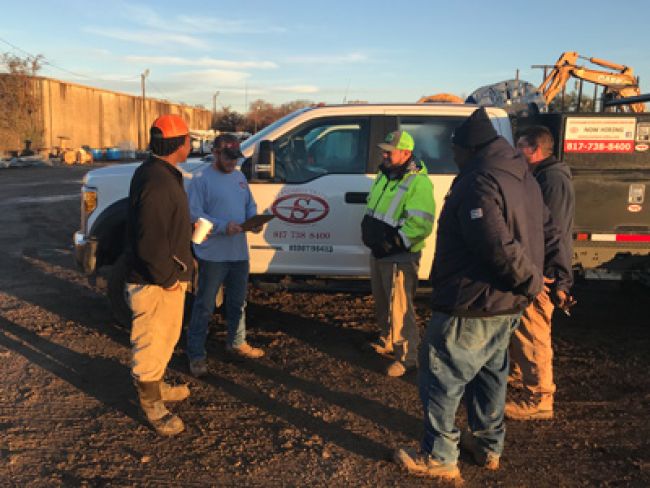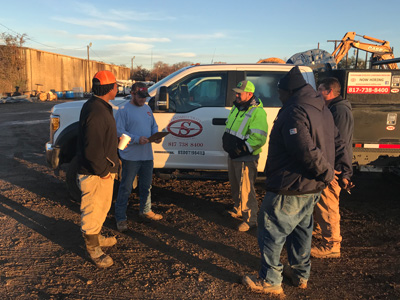
Three Overlooked Processes for Increasing Safe Work Practice

Have you ever seen or heard a restaurant, vehicle dealership or retailer claim, “We care little about service”? On the contrary, don’t many of these businesses – if not most – make bold claims about the quality of their services? How many, though, take the time needed to do the work, pay attention to the details, and become known for meeting or exceeding their claims?
Now, think for a moment. Have you ever seen or heard an electric utility organization of any variety claim, “We care some about safety performance”? I doubt it. If you look at 100 electric utility website landing pages, it’s likely you will see slogans about safety. Investigate those sites further and it is common to see safety listed as a company value or guiding principle. Yet just as some retail establishments tout their high-quality service while acting in ways that make it clear that “service” is more a buzzword than a business practice, so, too, are there electric utility companies and contractors that publicly state their concern for safety while their day-to-day actions don’t back up those claims.
Job descriptions, job safety analyses, tailboard meetings, PPE and training are important components of an effective safety program. But even for companies that are truly focused on providing a safe working environment for their employees, there are at least three other components that contribute to a consistently safe workplace, yet tend to get overlooked: effective interviewing, onboarding and mentoring processes.
1. Interviewing
It is critical that organizations in any industry understand safe work practice begins when an applicant interviews for a position. But it’s also important to ask the question, is the selection process an actual process, with outlined, effectively executed steps, or is it largely reactive and haphazard? More importantly, have interviewers, especially those with a decision-making role in hiring, been trained to ask behavioral interview questions rather than simple yes-no or short-answer questions? Lawful background checks, drug screenings and hiring assessments all have a place in the selection process. However, the absence of an interview based upon the critical elements of a job, such as the applicant’s attitude and past actions related to safety, may allow an applicant to hide his or her lack of concern for safety – a lack of concern that eventually will end up on the job if the applicant is hired.
Effective behavioral questions asked during an interview – such as the following examples – make it more challenging for an individual who is arrogant about working unsafely to become part of your organization, where he or she can influence others to work unsafely.
- What is the value of working safely to you? What do you think are the direct and indirect costs of working unsafely, both to you and to our company?
- What are some unsafe actions you have personally seen from co-workers in this industry in the past? How did you respond?
- Can you describe how you reacted to the last new safety procedure implemented by a company you worked for?
- If I interviewed your past co-workers, how would they describe your attitude toward safety policies and procedures?
- Describe the last incident investigation you were part of. Do you believe the investigation was effective or ineffective? Why? What did you learn from the process?
What do questions like these have in common, and what do they have to do with safe work performance? They do not assume an individual will work safely. They help to verify that an individual has thought and will continue to think carefully about safety and what is required to work safely. Effective organizations understand that an applicant’s industry work knowledge and experience do not mean the applicant will work safely during an installation or repair. Technical knowledge, even a lot of it, does not mean an individual will use that knowledge to work safely. Effective interviewing addresses technical expertise and experiences as well as safety attitudes and what those attitudes look like in action.
It is unwise and unsafe to believe that spending time investigating an applicant’s safety-related beliefs and past actions is too time-consuming, or that those topics are something to be addressed once the applicant is hired. Additionally, whether intentional or unintentional, this also communicates that safety takes a backseat to technical competence within the organization.
If our safety performance is not meeting our standards, our employee selection process – including its interviewing component – is one important place to begin taking corrective action. Yes, effective interviewing takes time, but what takes longer: effectively interviewing candidates to select those whose attitudes and actions indicate a genuine regard for safe work practice, or regularly investigating the same types of incidents, investing in repeated performance counseling for employees whose actions likely were predictable and conducting the additional interviews necessary to replace ineffective employees?
2. Onboarding
At a dozen industry conferences over the past decade, I heard representatives of electric utility industry organizations say that finding and hiring employees is one of the most significant challenges facing the industry. It remains curious to me that the challenge of finding potential employees is great, yet the significance of onboarding often is overlooked. Both research and practical experience demonstrate that what happens – or doesn’t happen – during onboarding directly impacts such things as turnover and productivity.
Consider this: You are asked to visit a new neighbor’s home. When you arrive, the door is opened by someone who mutters, “Come in and sit down, someone will be with you in a minute” and then walks off. How welcome would you feel? More importantly, how enthusiastic would you be about staying? Finally, if while walking away the individual who opened the door further muttered, “There’s food on the stove, help yourself,” how safe would you feel getting hot food off that stove?
Too often, onboarding processes in production environments look like that new-neighbor scenario. New employees, excited but nervous, arrive at a new job for onboarding. However, even if they are on time and in the right location, they may receive a greeting that is lukewarm at best. When this occurs, think of the messages that have already been sent:
- Those things we told you about our interest in you during the interview – that’s just stuff we say;
- We work largely on the fly here; and
- If you make it here, it will be on your own, like we had to do.
It is easy to misunderstand the difference between a well-intended information dump and an effective onboarding process – particularly if an organization has never developed and delivered anything but an information dump.
To design and consistently execute an onboarding process that produces new-employee interest and engagement – both important elements of safe work practice – consider the following basic items:
- Construct an onboarding plan that involves specific safety-related touch points for at least 90 days (180 days is even better);
- In advance, provide documents to the new employee to be reviewed, signed and returned on the first day of onboarding;
- Provide incoming employees with the names of the co-workers they likely will encounter on their first day;
- Meet the new employee at the onboarding location to make sure he or she receives a warm welcome from someone he or she knows;
- Make sure the new employee understands the food arrangements for his or her first meal on the job;
- Arrange for an effective employee to eat lunch with the new employee for at least the first three days, although the first full week is better;
- Make certain the new employee’s first work partner or crew is as positive and works as safely as possible; and
- Check in with the new employee at the end of each of the first four weeks, asking what has gone well, what has been surprising, what contradictions the employee has heard and seen, and what outright problems the employee has had.
An organization that expects its employees to engage in safe work practice understands that onboarding must involve more than a simple “You’ll do fine.”
3. Mentoring
Mentoring is a third overlooked component of safe work performance. Who is walking alongside new employees, helping them make their way? “We all are” is a cop-out that typically means “no one.”
Why do new employees need someone to work alongside and mentor them? As an organization, you have a hand in the messages they receive from co-workers. Guess who will control the safety messages new employees receive if you do not proactively plan for them to spend time with individuals of your choosing? The answer is, potentially your least effective, most negative, least safe employees. To put it bluntly, misery loves company. So, ineffective employees seek an unknowing ear for their gripes, excuses, blaming, and other beefs about work and life. After all the work that went into interviewing and hiring, does it really seem like a sound idea to turn over a new employee to Mr.-Let-Me-Tell-You-The-Real-Story?
What are the things the organization wants to make certain a new employee is getting in order to increase that individual’s chance for success, including working safely? Define those items and assign them to someone other than the manager. Or, assign them to the manager and allow the assistant crew manager to run the crew for 90 days until the manager is confident the new employee is established and headed in the right direction, which is defined by objective organizational standards, not just the manager’s standards.
Mentoring can be as informal as a weekly standing meeting, during which the mentor asks the new employee for the highs, lows, questions and aha moments from the past week, and provides the new employee with any follow-up information the mentor has in response to questions or issues that were brought up the previous week. Mentoring also can be formal and integrated with other training processes. The point is to establish regular contact and openness.
In conclusion, safe work practice happens on purpose. Items such as PPE and safety meetings have obvious value; less obvious is the value of interviewing, onboarding and mentoring. It is wise to consider their potential in your organization.
About the Author: Bart Castle is a consultant who has spent over 10 years focusing on learning and development. During that time, he has worked with a number of electric utility organizations on topics including serious incident investigations, safety program elements and training, leadership development and organizational development. Today, Castle consults with and supports forward-thinking organizations as they begin their transition to digital training models, including mobile and microlearning. He can be reached at 817-500-8202.

